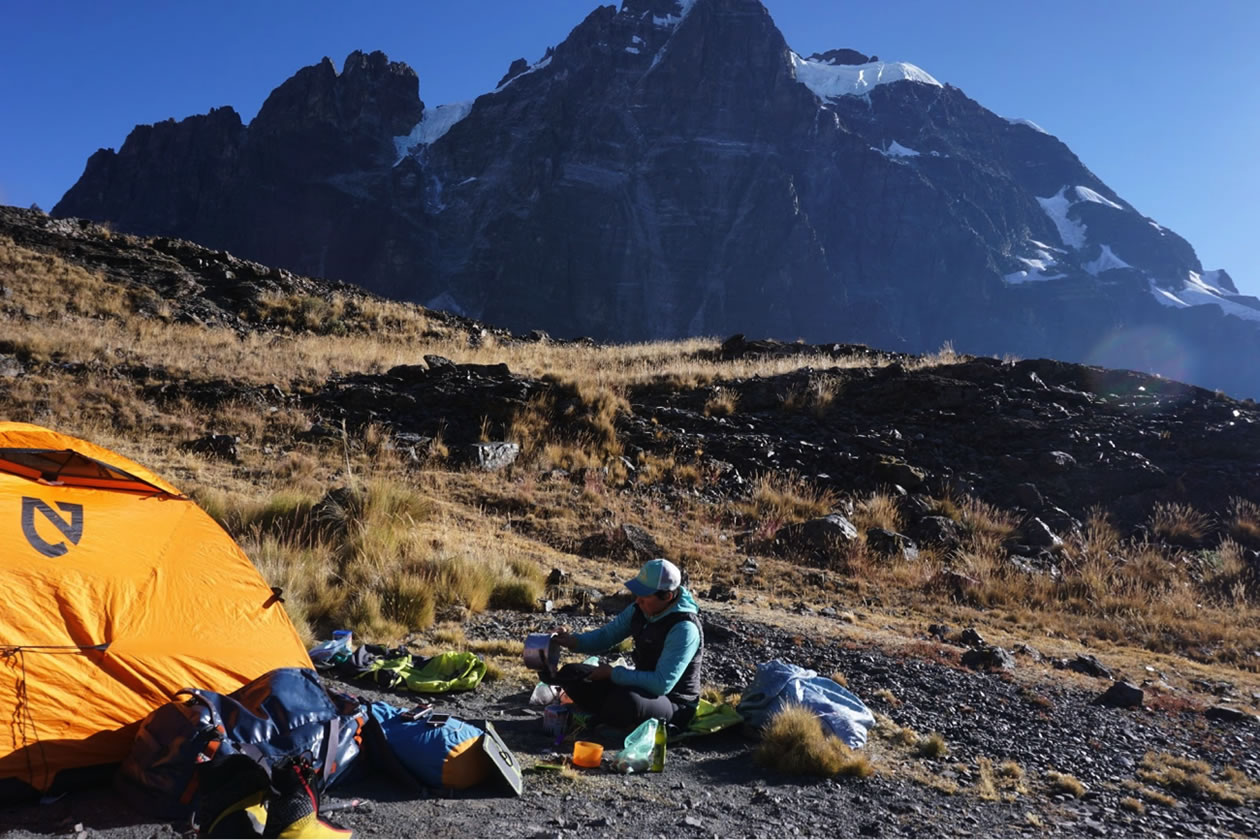
Anna Pfaff brings medical care to a free clinic in Bolivia and with local guide Juliana Garcia establishes a bolt-free 1600m 5.10b R on a seldom-climbed peak.
June 21: At late afternoon, we arrived a ropelength from the east summit. It was my lead and I was nervous about what I saw ahead. Blocks were precariously balanced in the terrain above and I knew that only a slight nudge could displace them onto Juliana. I started up and equalized a cam and piton and brought Juliana up. We decided to end our climb here–neither of us were comfortable climbing through the blocks ahead.
I had flown in from Oakland after a month of solid work: every day was spent at the emergency room at the trauma center where I am a nurse. I landed at La Paz, Bolivia (at 11,942 feet) on June 15. It’s a great place to acclimatize in your hotel so long as you don’t get sick.
Juliana arrived three days later, but she didn’t need to acclimate because she had been guiding on Cotopaxi in Ecuador. Before that she guided Denali. She did all the hard work on our trip, carried the heavy backpack and took care of lot of the logistics. She didn’t have a climbing plan but we knew that there were many options in the area with routes ranging from 700-1600 meters on various peaks from 5000 to 6500 meters high.
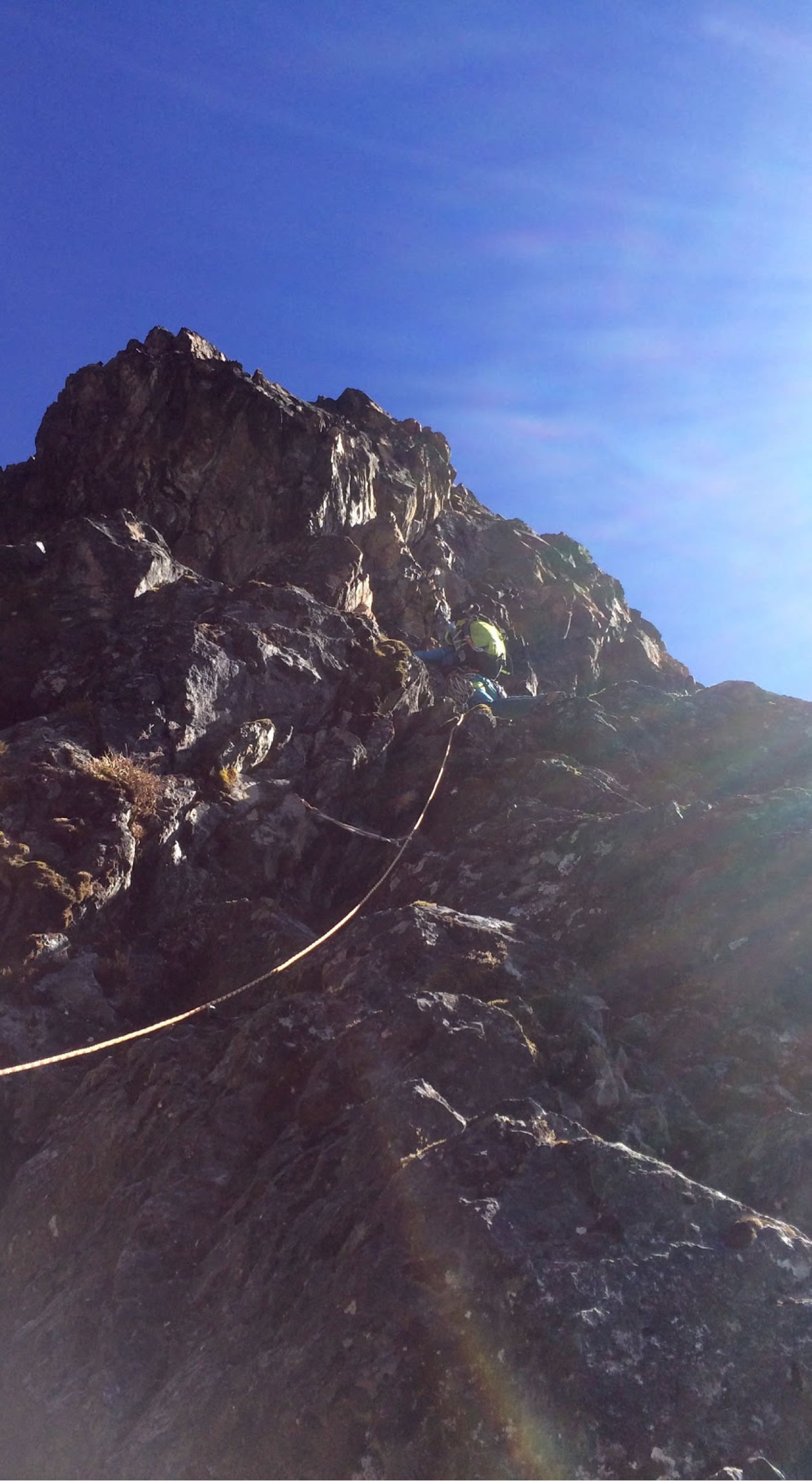
“What should we climb?” I asked her as we sipped coffee and ate Saltenas [fried hot pocket-type food] in La Paz. We had a few ideas but upon investigating conditions with local climbers the word was the season had been dry, with little snowfall and no ice forming anywhere.
Juliana suggested we head toward the mythical Tiquimani Peak, a rarely visited Andean giant, referred to as LLampu by the indigenous Quetcha and located just southeast of the infamous Huyana Potosi. The peak itself had not seen any new route development for many years and the existing ones are infrequently climbed.
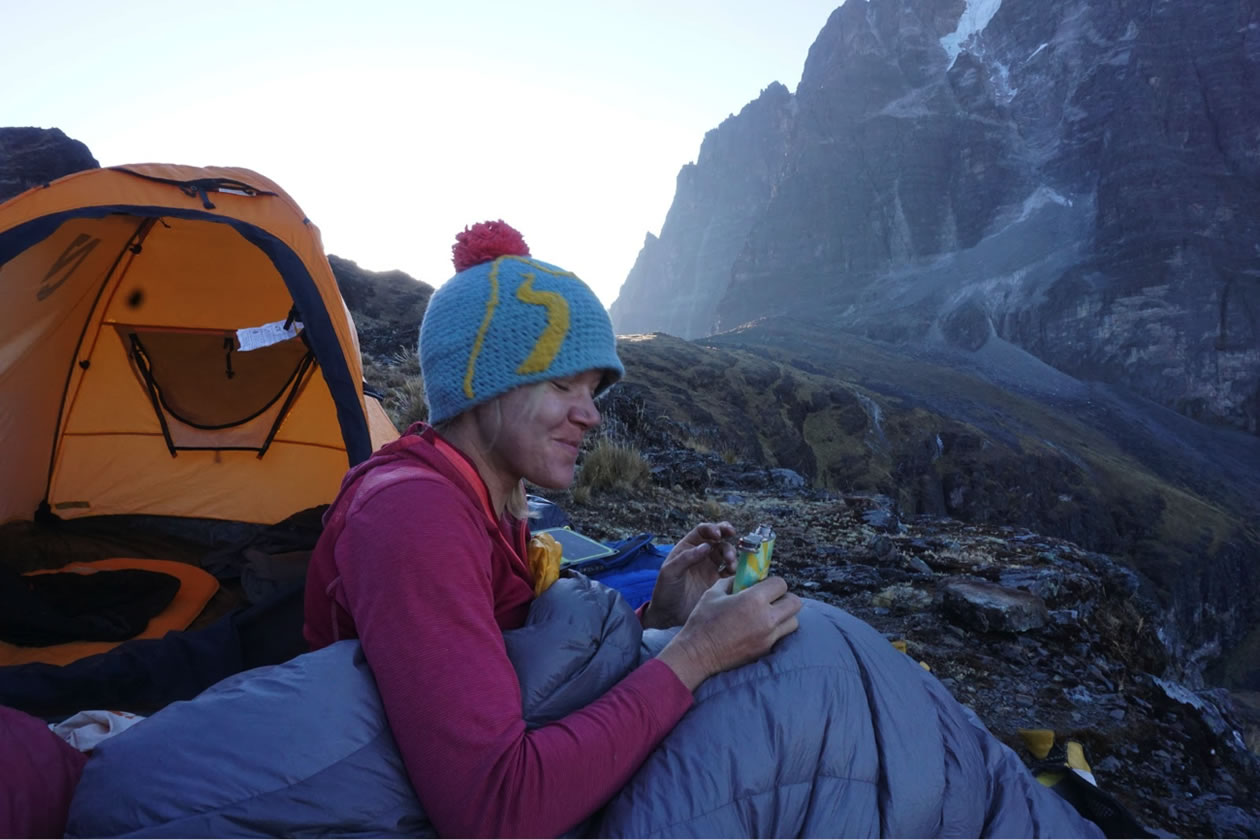
Four days after arrival we loaded an old, front-wheel drive minivan with food and gear for a five-day trip. The van was so old that I didn’t think it would be street legal in U.S. We drove for three hours from La Paz toward Zonga Pass and the nearby lake Wara Warani, above the village of Botijaca. We got three flat tires on the drive in and at one point tried unsuccessfully to fix the tire with Seam Grip. (It takes 24 hours for Seam Grip to dry). Instead the driver, Valentino, pumped it up and we kept going because we already went through the two spares we had. The switchbacks on the drive reminded me of a mini Karakorum Highway.
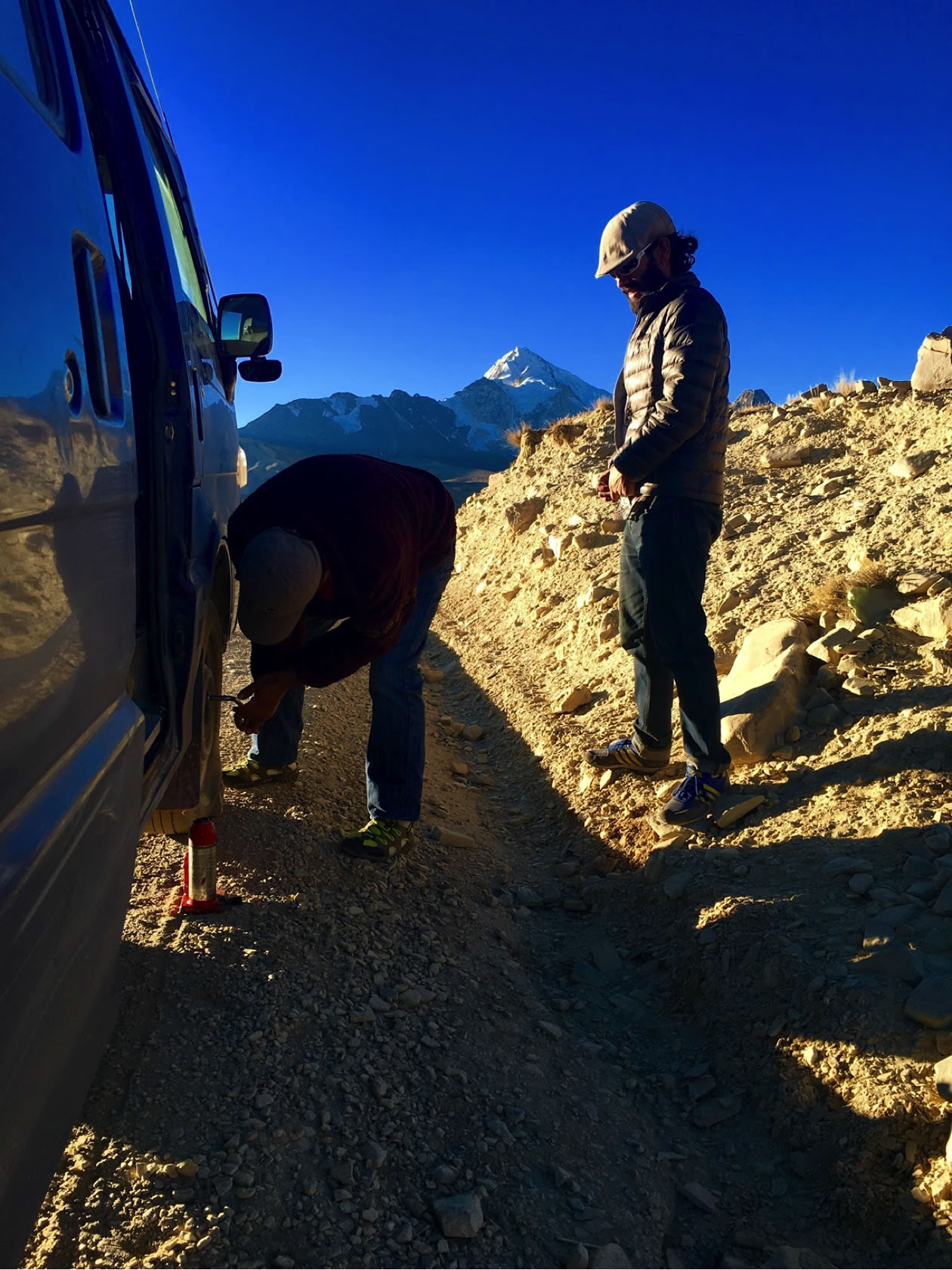
That night we set up base camp by Lake Wara Warani after arriving at 11 p.m. The next day we could see our objective, the huge south face of Tiquimani Peak. In the morning we left camp to scope the South Face Normal Route climbed in 1997 by P. Vilnarasu, but we concluded that the route was too dry–it’s an ice line that didn’t have ice on it–so we decided to climb the peak’s northeast ridge.
After packing extra gear, we spent the next several hours hiking the four miles to reach our new objective: Tiquimani Peak’s northeast ridge. Our packs were heavy with equipment–ice axes, snow pickets, crampons, cams, etc.–because we didn’t know what we’d need.
The night was the start of summer solstice. To celebrate, we shared tequila and we offered some to Pachamama, Mother Earth, by pouring a few drops to the ground. This was Juliana’s suggestion and it is an Andean tradition.
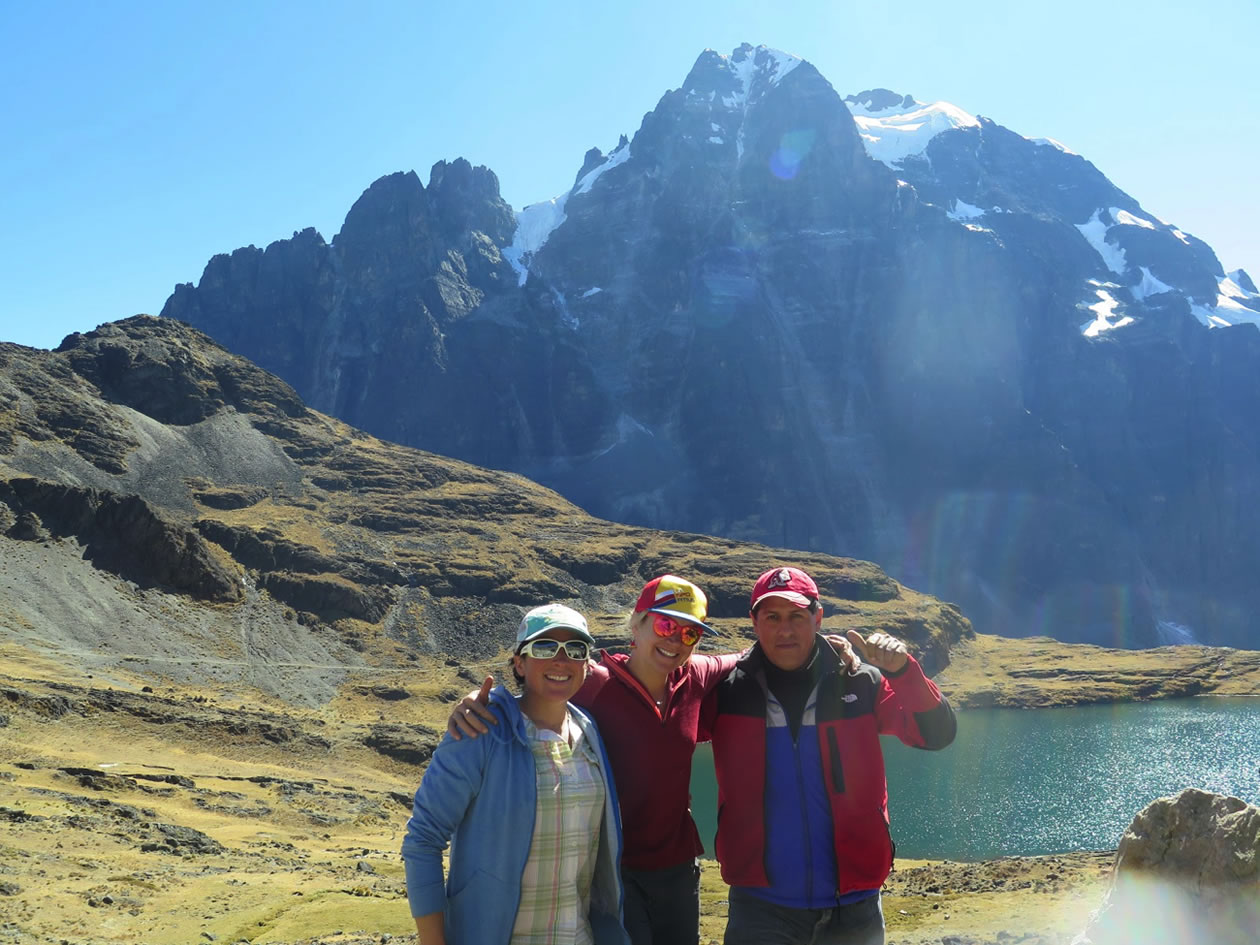
700 meters of Rock Climbing
At first light, we started the technical part of the climbing. I was totally unacclimatized on this climb. It was horrible. Juliana took the first lead. She moved over face holds and cracks and negotiated her way around loose, sharp alpine granite. The rock was black and brown and up higher it turned into grey granite. The higher we climbed, the better the rock quality became.
We pitched out the terrain and sometimes built anchors with two (poor) pieces or by slinging natural features. The terrain was mostly face climbing over blocks with sparse gear. We followed and led all the pitches free, with two pitches rated up to 5.10b. The line we picked had tricky gear placements, a lot of exposure and a lot of don’t-fall-here places. As we made progress up the wall, and the hours passed, we’d look down to see the clouds burning off from the jungle below.
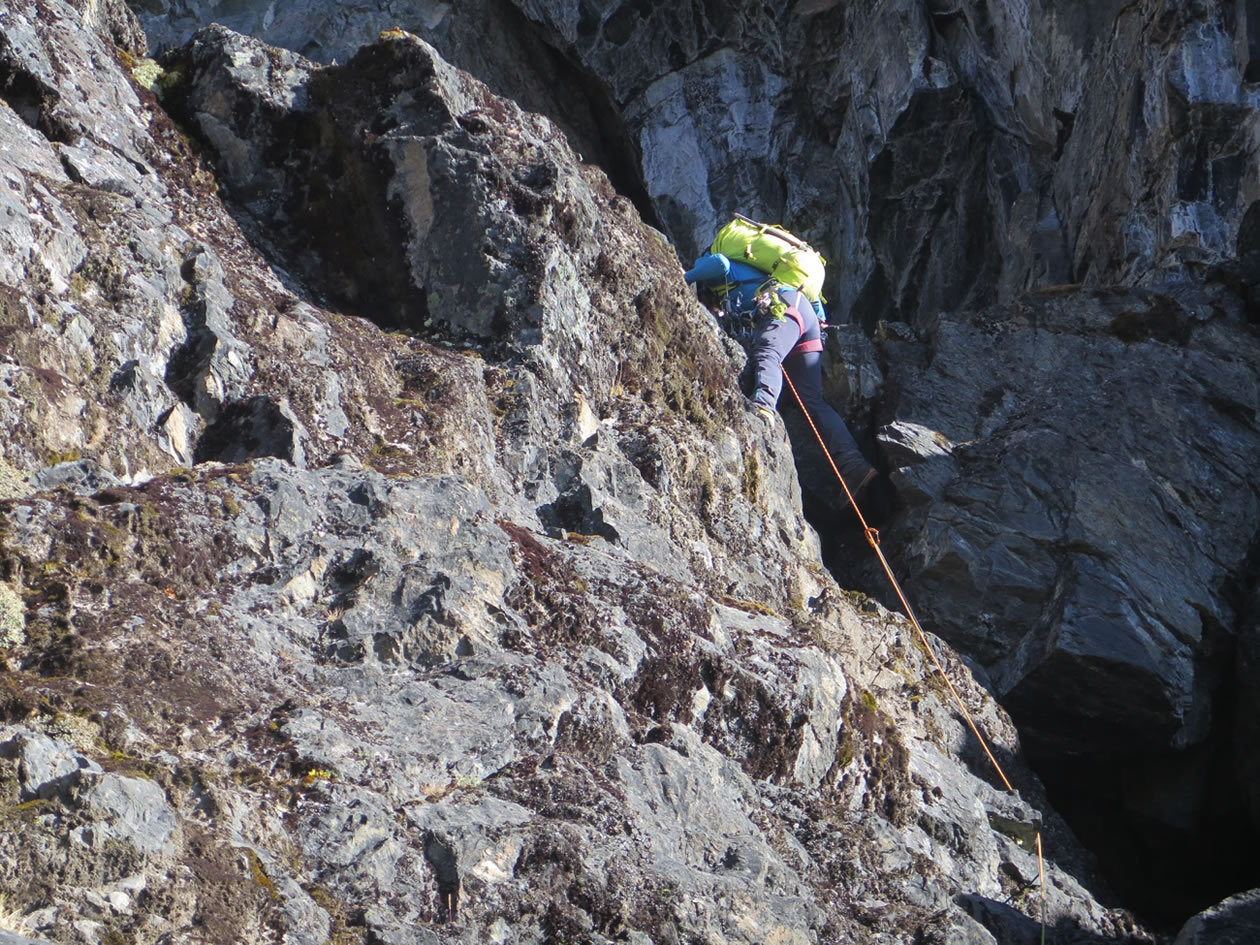
Fifty meters from the top of the wall we decided it was too dangerous to continue because of loose terrain. We began rappelling. At one point it took me 45 minutes to find something to rap from. Another time I held a sling in place over a rock bollard to keep the sling from sliding off while Julianna rappelled. I yelled down at my partner to not traverse while she was on rappel, as I didn’t want the sling to slide off. Our last anchor was a single nut wedged between two blocks–scary style–and we committed to it. We held our breath and gingerly descended to the ground. Sometimes you get lucky.
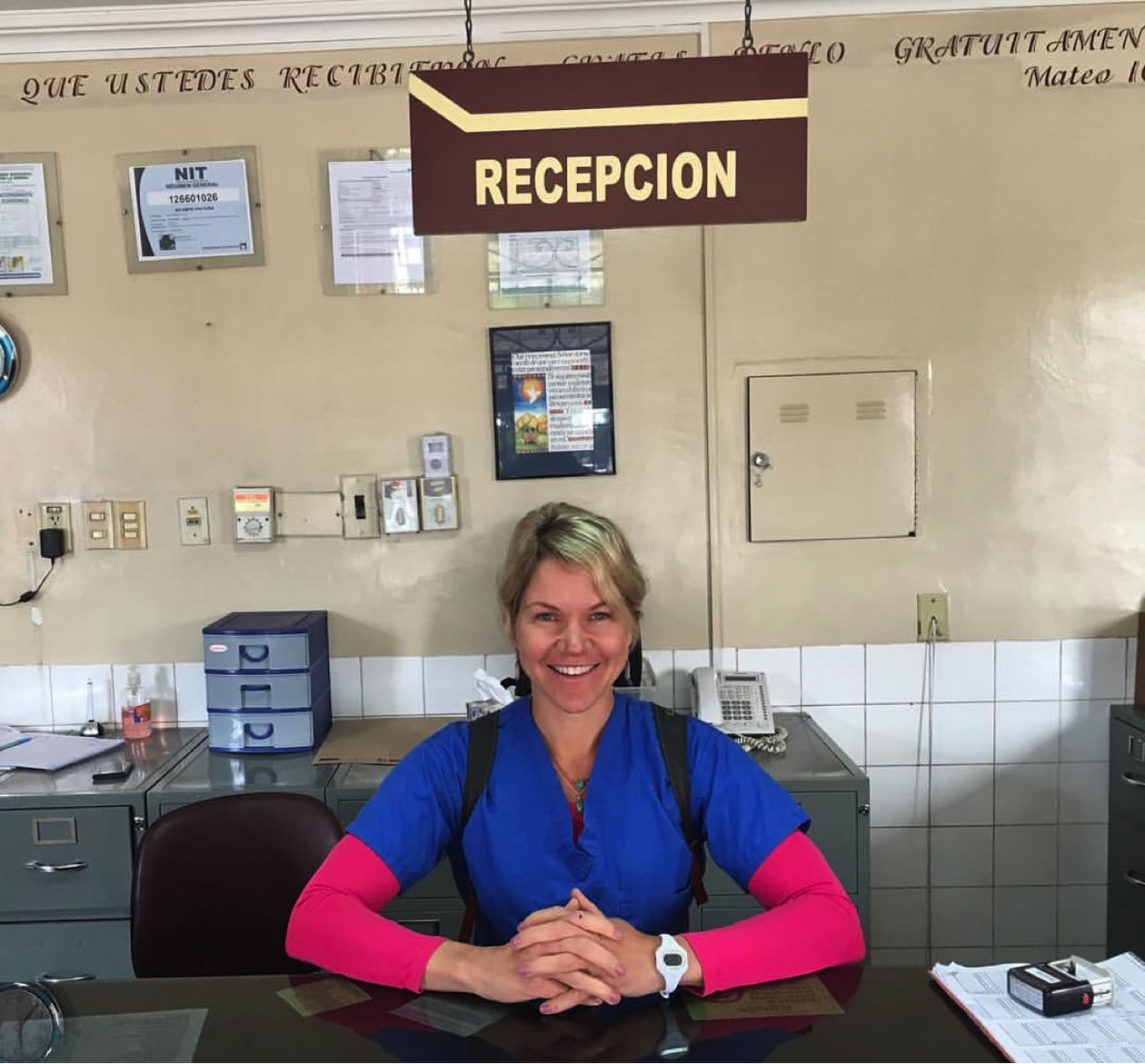
Back at our bivy, we crawled into our single sleeping bag and slept until the warm sun hit our faces. That afternoon we toasted to the Pachamama again, gave some more tequila to her and finished off the bottle. That night we sent a text message to our driver that we were on our way, via our sat phone, and prepared to hike out in the morning.
A few days later, Juliana met up with a client and guided a weeklong trip. I went to the clinic to volunteer my time with the patients and wrapped up a broken ultrasound machine to take back to the States. I’ll bring the repaired machine back with me and will be volunteering for 10 more days at the clinic Mission of Hope, in Santa Cruz, Bolivia. And I hope to get some more climbing in too.
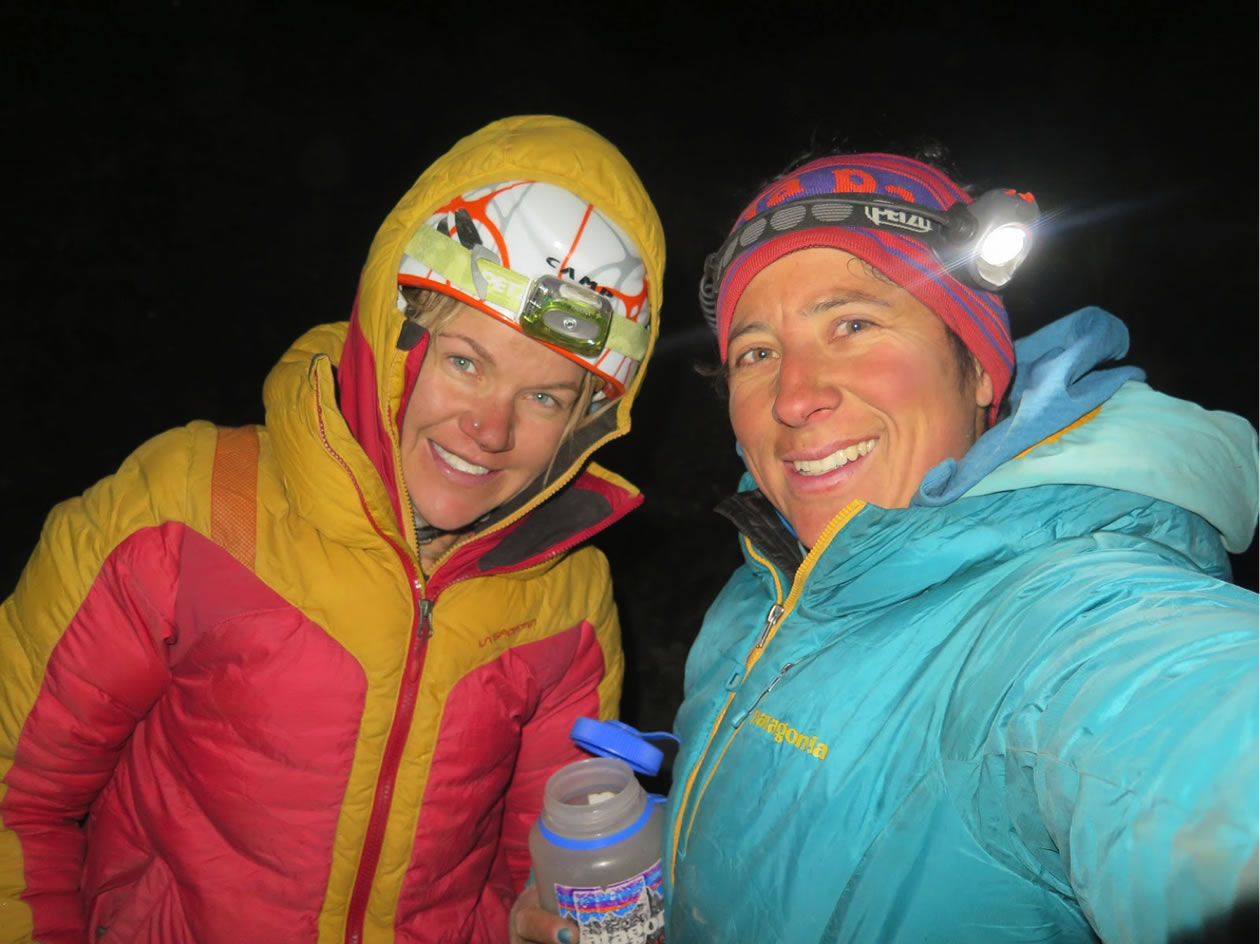
Sources: Anna Pfaff, Boliviaclimb.com, andes.org.uk/peak-info-5000/tiquimani-info.asp